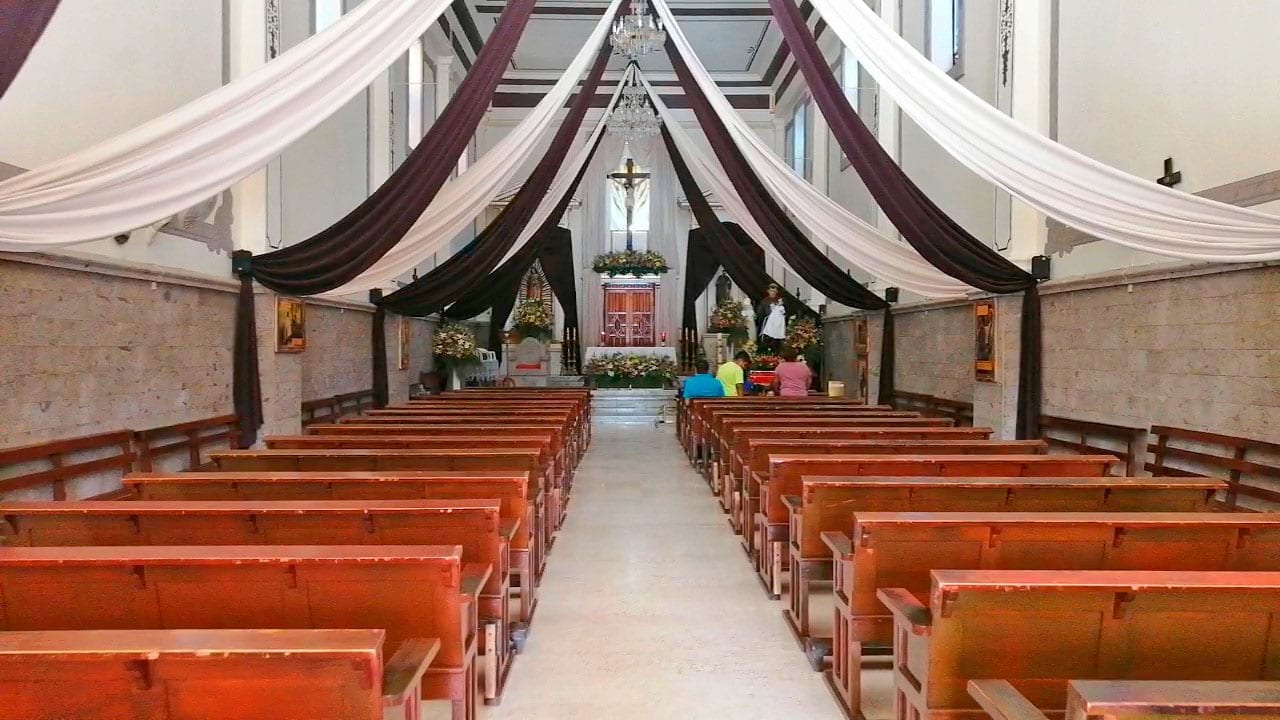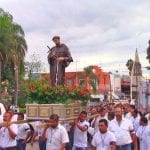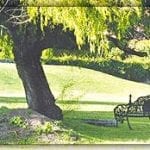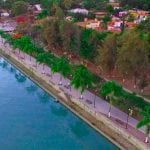SAN ANTONIO TLAYACAPAN
San Antonio Tlayacapan, Jalisco, Mexico
“PLACE OF THE OFFERINGS TO MEN”
Long before the Spaniards arrived, the Cazcanes and the Cocas lived in what is now known as San Antonio Tlayacapan, and both were dedicated to agriculture and hunting. In 1523, Cortez sent men to control the area. By 1539, both tribes had surrendered to the Spaniards, who then built monasteries as refuges for the natives.
Thus, the first Catholic church in Lakeside was built in this spot by the Franciscans. All that remains today is the tower, preserved in the patio of the primary school, the rest having been destroyed by time. A new church was built, still in use today.
San Antonio Tlayacapan is located between Chapala and Ajijic.
LOCATION
HISTORY
Long before the Spaniards arrived, the Cazcanes and the Cocas lived in what is now known as San Antonio Tlayacapan, and both were dedicated to agriculture and hunting. In 1523, Cortez sent men to control the area. By 1539, both tribes had surrendered to the Spaniards, who then built monasteries as refuges for the natives.
Thus, the first Catholic church in Lakeside was built in this spot by the Franciscans. All that remains today is the tower, preserved in the patio of the primary school, the rest having been destroyed by time. A new church was built, still in use today.
FLORA
San Antonio is a town recently much affected by commercial development. Not much greenery is in evidence from the carretera (highway), but once you walk or drive down near the main plaza, this changes. Go south towards the Lake and you’ll find cedros, encinos, robles, pines and saucillos. Near the Lake, farms are planted with corn and chayote. Go west towards La Floresta and you’ll see giant jacaranda trees, spectacular in March with their lavender blossoms. In village streets are mango and huamuchil trees. Fruit trees – lemon, orange, tangerine, avocado and chile – are found mostly in private gardens.
FAUNA
Years ago, fauna in San Antonio included deer, coyote, gray fox, rabbit, reptiles and birds. All have disappeared now except for the reptiles that are still to be found near the mountains. As for birds, it is estimated that a population of 240 varieties can be found here, within a 30- to 40-mile range. They include snowy egrets, white herons, northern migrating ducks, humming birds, finches, wrens, sparrows, swallows, orioles, flycatchers, grackles, road-runners, hawks and vultures.
Farm animals – horses, donkeys, cows, pigs, and chickens – are common. Riding horses are for hire just west in La Floresta.
POPULATION
San Antonio has a population of approximately 4,000. At first glance, in the vicinity of the carretera, it may seem to be the most populated of the five villages that make up Lakeside. But most people are just visiting or only passing through. In this part of town are located Lakeside’s only bilingual school, a popular RV park, and the Lakeside Little Theater. Because it is also a lively business district, many expats come here to shop, visit their commercial mailboxes, drink coffee, have a meal, or have their car fixed.
The pace slows down as you head for the plaza a few blocks down towards the Lake. The heart of the village is a peaceful, untouristy place, with foreigners not much in evidence.
COMMUNICATION
Between San Antonio and Ajijic’s La Floresta, the two-lane Libramiento cuts off from the carretera and heads up the hill to the Guadalajara highway, bypassing Chapala. It’s great for autos, saves five minutes to the airport. However, buses do not travel the Libramiento, and bus riders still must go through Chapala to get to the city.
The Chapala-Jocotepec bus passes every half-hour along the carretera. Smaller, local buses pass more often, and their routes take them into the various villages. Taxis are available to take passengers to any Lakeside village, or to Guadalajara or points beyond.
The San Antonio full-service post/telegraph office is located on the main plaza. The commercial Mail Boxes Etc. is on the carretera.
Private and public telephones are available for local and long distance calls. Internet service is available. Television and radio signals come from Guadalajara and some channels from Mexico City. Cable television is well-established here and some people use satellite TV.
ART
San Antonio is the site of the Lakeside Little Theater, where plays are interpreted and directed, mostly by the foreign community. Located near the Oak Hill School, the theater is also used for special school events.
FESTIVITIES
Saint Anthony is the patron saint of the village, and once a year rockets blast into the air before dawn, signaling all those for miles around that this is San Antonio’s day to celebrate! From June 5-13 bands blare, church bells ring and the town is shaken wide-awake. Then come the food, parades, music and dances. For weeks, the castillo in the plaza has been in the making. The bamboo framework is set with fireworks, and at each corner are Catherine wheels and bunches of squibs. Some years the structure is five stories high!
November 2, the Dia de los Muertos (Day of the Dead). An altar is built at the plaza, and remains for two days. A play is held at night.
December 12, the Celebration of the Virgin of Guadalupe. Religious activities are held, with a procession through the streets of San Antonio.
San Antonio’s traditional December posada attracts many visitors. On each of several nights preceding Christmas, Mary, riding a donkey, is led by Joseph through the village streets seeking shelter for the impending birth of the Christ-child. She is repeatedly turned away. The procession ends at the church where mass is held. A party follows, with piñatas for the children.
Late in April, San Antonio hosts a Mexican Salsa Competition, a popular event held for public benefit.
VIDEOS OF SAN ANTONIO TLAYACAPAN










December posada attracts many visitors. On each of several nights preceding Christmas, Mary, riding a donkey, is led by Joseph through the village streets seeking shelter for the impending birth of the Christ-child. She is repeatedly turned away. The procession ends at the church where mass is held. A party follows, with piñatas for the children.
192.168.l.254